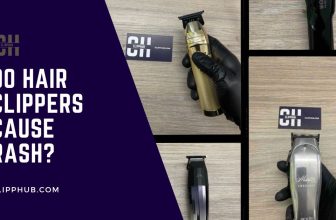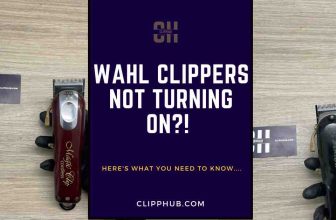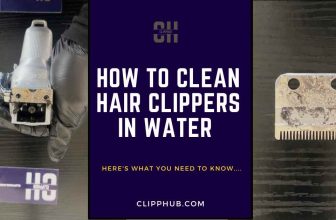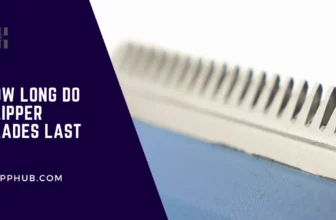
Hair clippers need cleaning. The cleaner they are, the better they perform.
For blades to be dirt-free, they need an effective disinfectant. 3% hydrogen peroxide can do that.
In this article, I will guide you on how to clean your hair clippers with hydrogen peroxide and give you tips that could save your blades.
With that said, take a look at the table of contents, and let’s begin.
How to clean hair clippers with hydrogen peroxide
3 % Hydrogen peroxide is very effective when it comes to cleaning metal however it can potentially corrode stainless steel, so use a small amount with the steps below:
Be sure to use gloves, when using 3-5% hydrogen peroxide, overall it’s safe but can be slightly irritating to the skin.
Then remove the top front cutting rail and top cutter blade.
Try to get into the hidden parts of your blades by scrubbing in the direction of your blades.
How clean your clippers are can make a difference in how safe your clients are as you work on their hair.
Your clippers work on a wide range of hair types and in the process, can easily hold blood and infections between the cutter which can be easily passed on.
I don’t think you’ll be doing your clients a benefit if you put them at risk.
The steps I have laid out above are a quick run-through on how to clean hair clippers with hydrogen peroxide. Later on in this article, I go far more in-depth on this process.
However, while hydrogen peroxide can be effective at cleaning your blades, it does have some drawbacks, I talk about that next.
Can You Clean Clippers With Hydrogen Peroxide
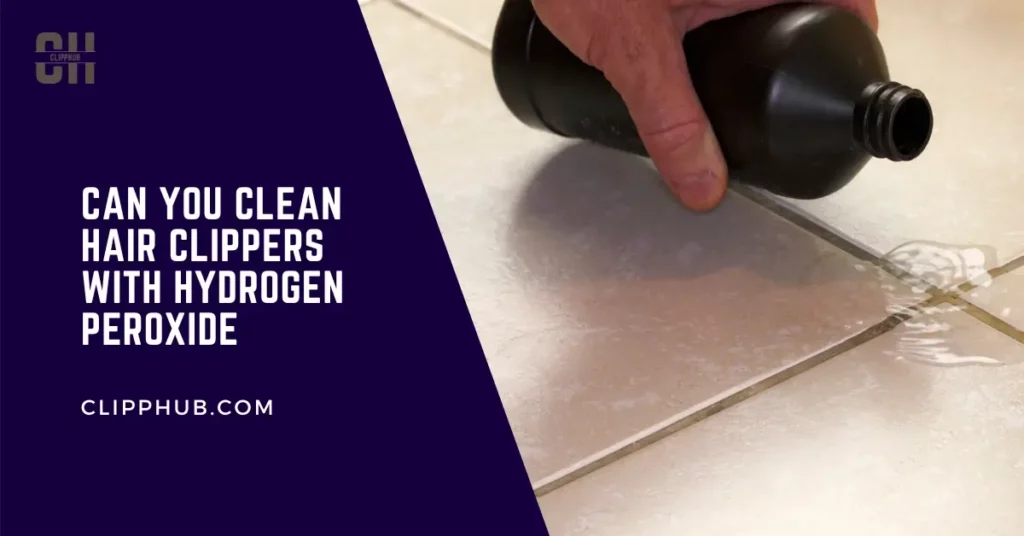
Yes, hydrogen peroxide can clean hair clippers but you must use a sparing amount to make sure it doesn’t corrode your blades but still deep cleans them in the process.
Hydrogen peroxide does have the potential to corrode stainless steel. This is the metal most commonly found on modern hair clippers.
Stainless steel is resistant to corrosion, stainless steel contains 12-30% chromium and it’s a passivity layer that acts as a shield against corrosion. this layer blocks oxygen from getting into the steel’s surface.
While this does protect your blades from corrosion, exposing your blades to heavy amounts of hydrogen peroxide for a long time will eventually corrode your clippers.
But this is in extreme cases, with the method I provide to you, hydrogen peroxide will only be in contact with your blades for a few minutes. Your blades naturally will be able to resist the effect of hydrogen peroxide.
Hydrogen peroxide is great at cleaning. It is a fantastic disinfectant that kills bacteria and germs which build up in around your blades.
Insider
But you must realize, that hydrogen peroxide is not made for hair clipper blades so it has some adverse effects as I have just mentioned.
Keep the hydrogen peroxide to 3% as the higher concentration you use, the more corrosive irritating the product become:
Medical news
I advise always using a cleaning solution made for hair clippers. I go more into detail in my guide on how to sterilize hair clippers at home.
I would recommend you take a look at some of the Best Clipper Disinfectant Sprays. These sprays below are facts acting disinfectants that leave your blades clean and ready to perform.
Andis Cool Care Best OVERALL
Clippercide Spray DEEP CLEANER
H-42 Barber Spray Best Solution Based spray
However If you have some hydrogen peroxide and are looking to quickly your blades clean,
I go more in-depth below, let’s take a look.
Clean hair clippers with hydrogen peroxide

For this cleaning process you will need:
- A brush
- Toothpick / air can
- Plastic tub
- Cloth
- Hair clipper oil
Step 1: Remove
detach hair clippers. ( keep screws and bolts in a safe place they will be needed later).

You will notice two blades, The first blade is the front cutting rail blade remove that first. Then you will be met with the top cutting blade, remove this next.
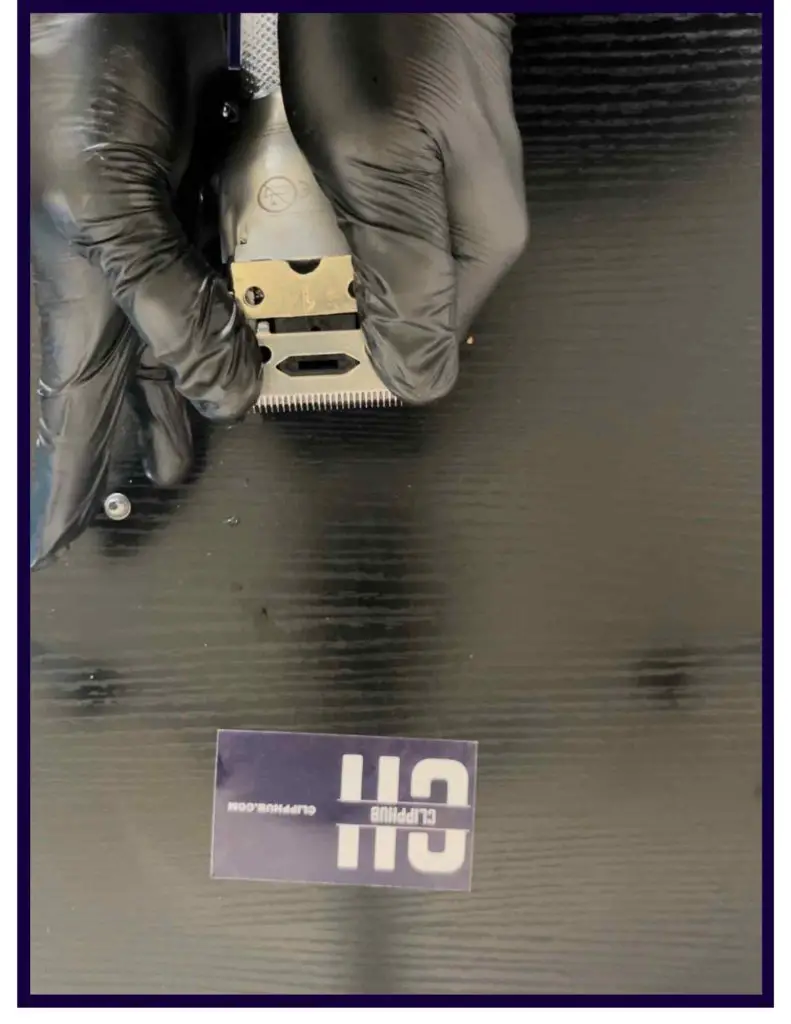
Step 2: Hydrogen peroxide
Put on some gloves.
Mix a solution of equal parts water and hydrogen peroxide in a small bowl or cup.
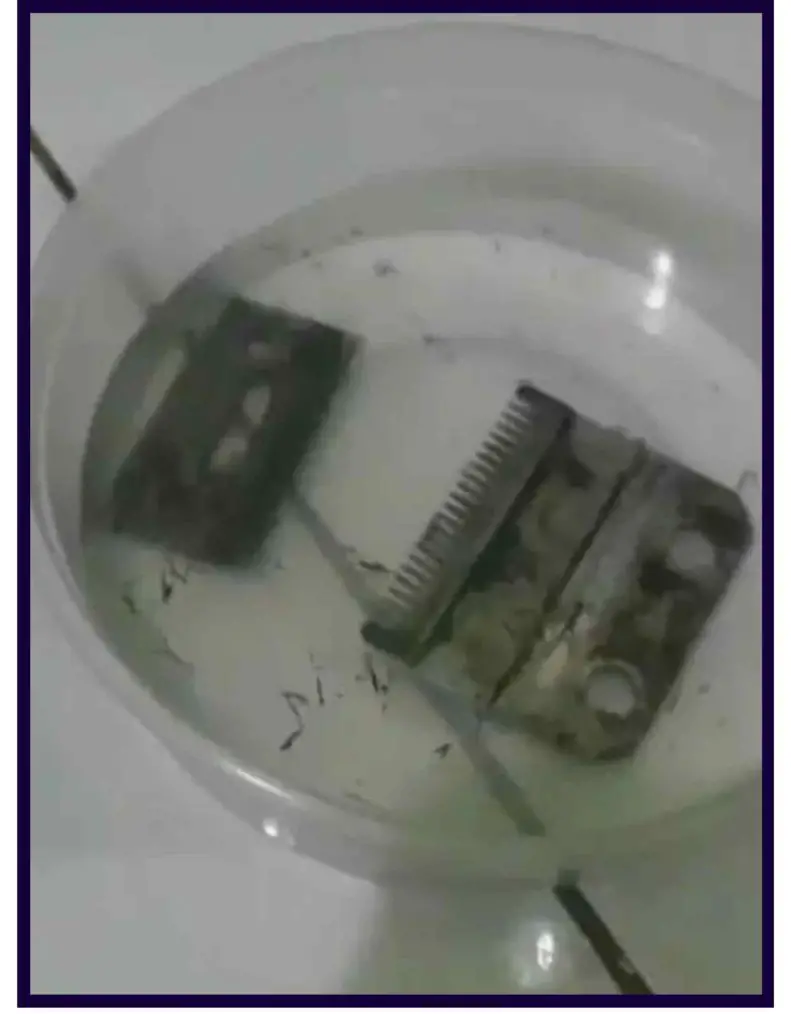
Aim to keep it to a 1:3 ratio of hydrogen peroxide to water. You can use a higher concentration of hydrogen peroxide if necessary, but be aware that it can be harsh and may cause damage to your blades over time.
Step 3: Scrub
Dip a smooth brush or cloth into the solution and use it to scrub the blades and other surfaces of the clippers. Be sure to get into all the crevices and corners.
While you should work to get as much dirt and grime off both your blades, you don’t want to scrub too hard and remove the chromium layer.
If you’re struggling, let your clippers sit in the water-peroxide solution for a minute or two and try again to remove the dirt.
Step 4: Dry
Rinse the clippers thoroughly with water to remove any residue. This will help prevent corrosion and ensure that the blades are clean and ready for use.
Then, you must Dry your clipper blades completely before reassembling them and using them again.
This is important because moisture can also cause corrosion and may affect the performance of the clippers
Step 5: Further check
Before you put your clippers back together, you must make sure the internal components of your clippers are clean too.
If the inside of your clippers looks like this:
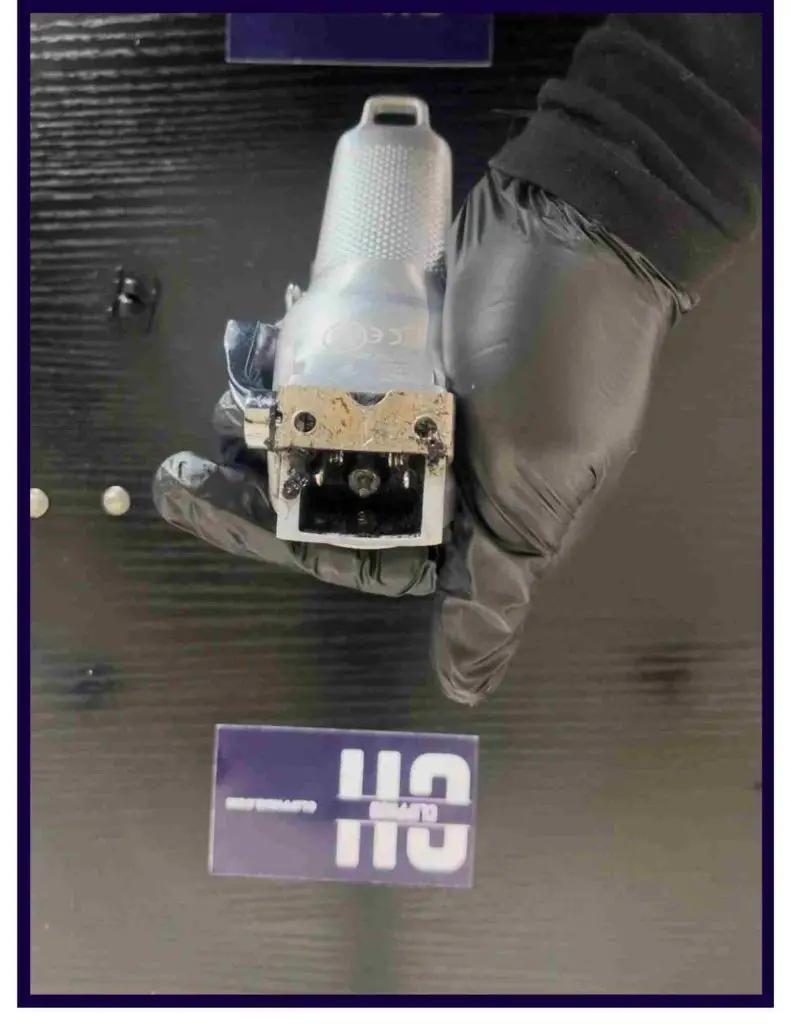
They need to be thoroughly cleaned out.
Use a toothpick or hard bristle brush to remove as much dirt and debris from within your clippers.
You can also use an air can to get rid of very tricky bits of hair.
Allowing this grime to build up puts your hair clipper motor at risk and stops your clippers from working at their best.
But do not put any hydrogen peroxide inside your clippers!
Use a dry tool to clean the internal parts of your clippers and if you have a blower use that to get rid of any hidden micro hairs.
Step 7: Re-attach
Once both your blades and your clipper are clean, you can re-attach your blades back onto your clippers.
Put your clipper blades back onto the setter.

Then palace your front rail blade on top making sure the holes for both line screws line up
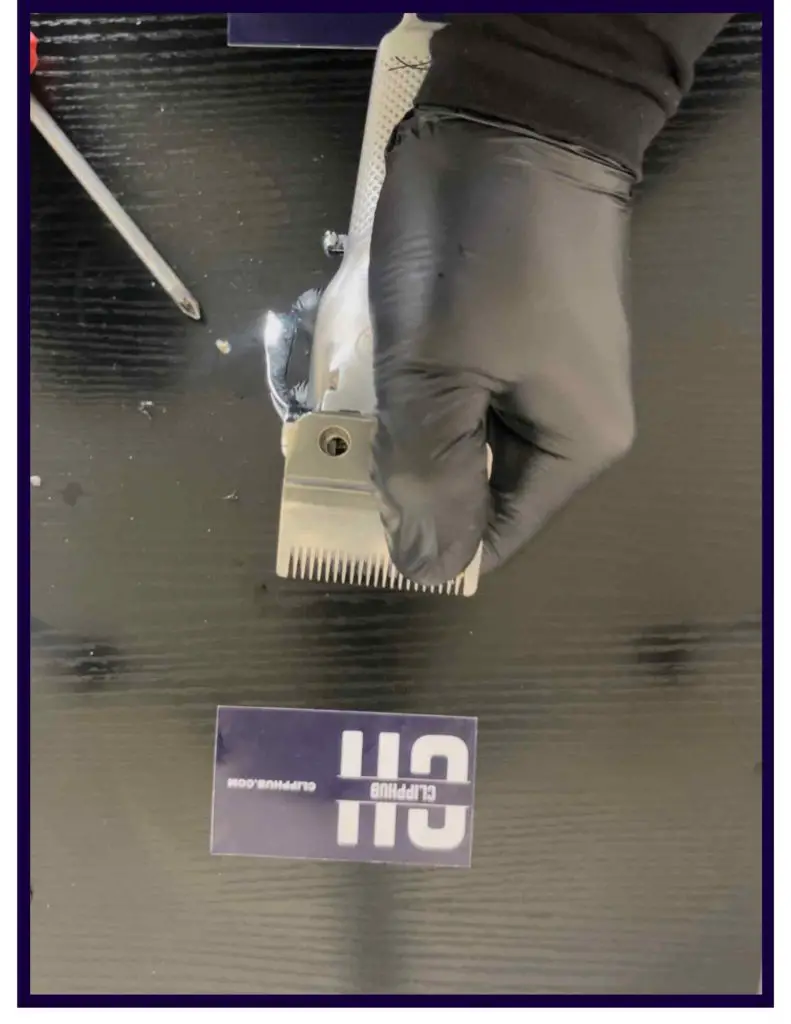
Now, individually put your screws back into the hole gap, and using your screwdriver, screw your blades back together but not fully as you have to make sure the alignment is correct.
Step 8: Align
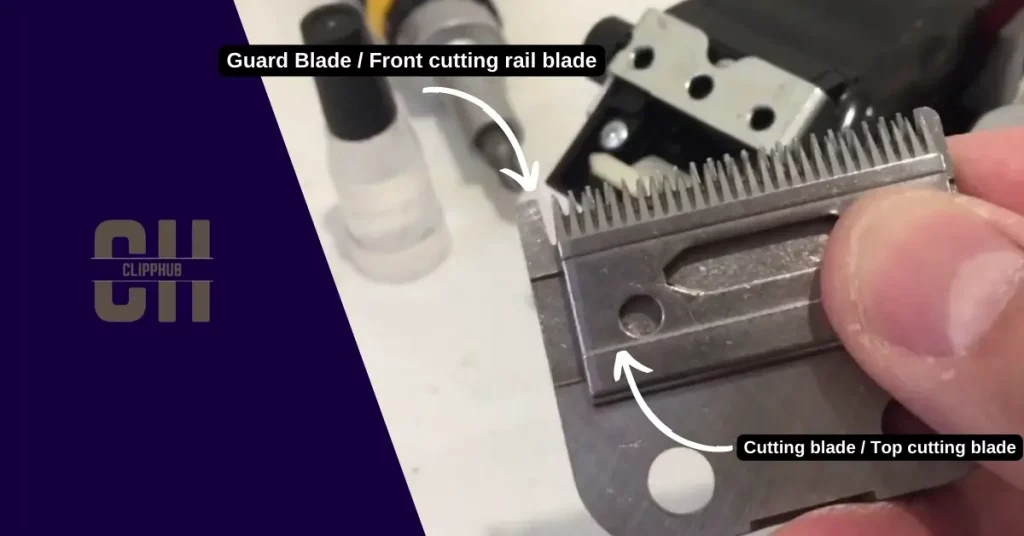
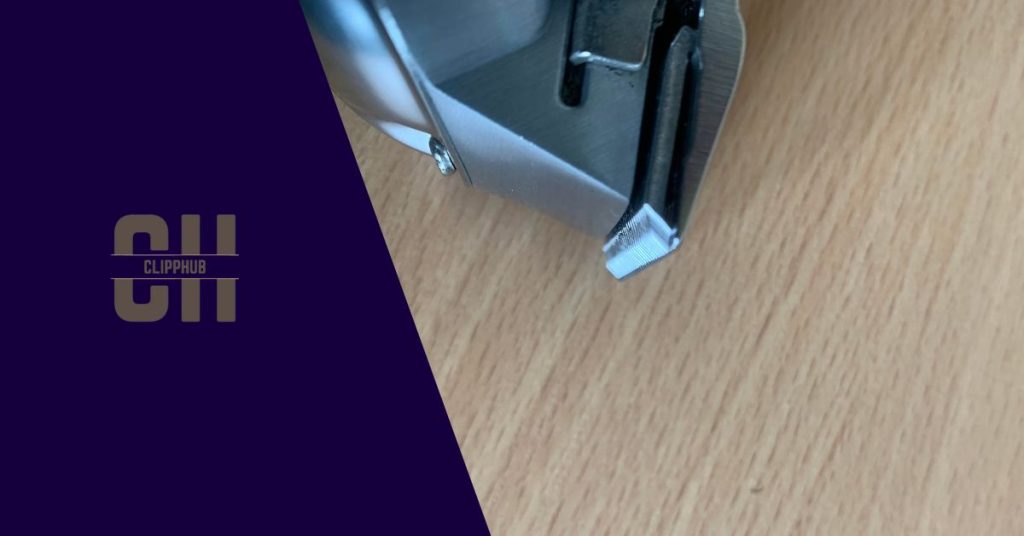
Move the front cutting rail blade to make it parallel to the cutting blade
Make sure the top cutter is also as straight as possible.
When done, screw your blades firmly back together.
Step 9: Oil
Once your blades are put back together, use hair clipper oil. Apply oil to your blades in the areas shown below:
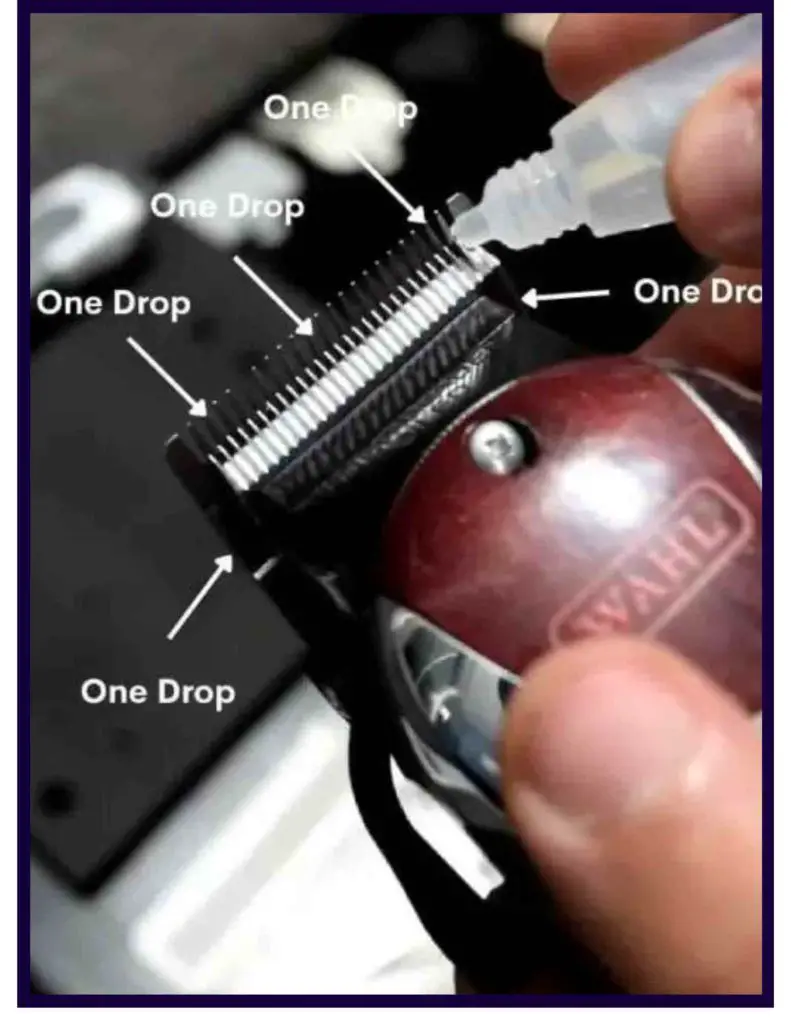
Once done turn your clippers on and work the oil into blades by opening and closing the lever for 20 seconds.
Afterward, wipe away any excess oil.
With that, your clipper blades and hair clippers should now be clean and ready for use.
Thai method cleaning when done can be very effective but it should be done sparingly I.e once a month to reduce the effect of hydrogen peroxide on your blades
If this cannot be done and you need to clean your clippers more frequently, take a look at my guide on sterilizing hair clippers.
How to clean rusty hair clippers
Conclusion
From this article, you should now have an understanding of how to clean hair clippers with hydrogen peroxide.
Hydrogen peroxide is an effective disinfectant but you must only it on hair clipper blades not the internal components of your hair clippers
Avoid leaving hydrogen peroxide on your blades themselves over a long period and be sure your blades are always clean/oiled before use.
If you have found this article helpful, please check out other related posts below and subscribe to our email list to receive hair clipper maintenance guides at no cost to you.
Also, Learn how to clean hair clippers with alcohol
FAQ
Isopropyl alcohol can be used to disinfect hair clippers, It is very effective at killing bacteria and germs. Hydrogen peroxide can also be an effective disinfectant but the best dis-infective would be blade disinfectants made for hair clippers
Hydrogen peroxide can cause blades to corrode if heavy amounts are applied and stay on the blades over a long period however in most cases when controlled amount of hydrogen peroxide is used on blades. It’s a very effective cleaner.
Hydrogen peroxide over time can remove the chromium stainless steel layer on hair clippers as it is an oxidizing agent. However, in most cases, the stainless steel layer can resist hydrogen peroxide and only becomes vulnerable when heavy amounts of hydrogen peroxide get on and stay on the blades.




